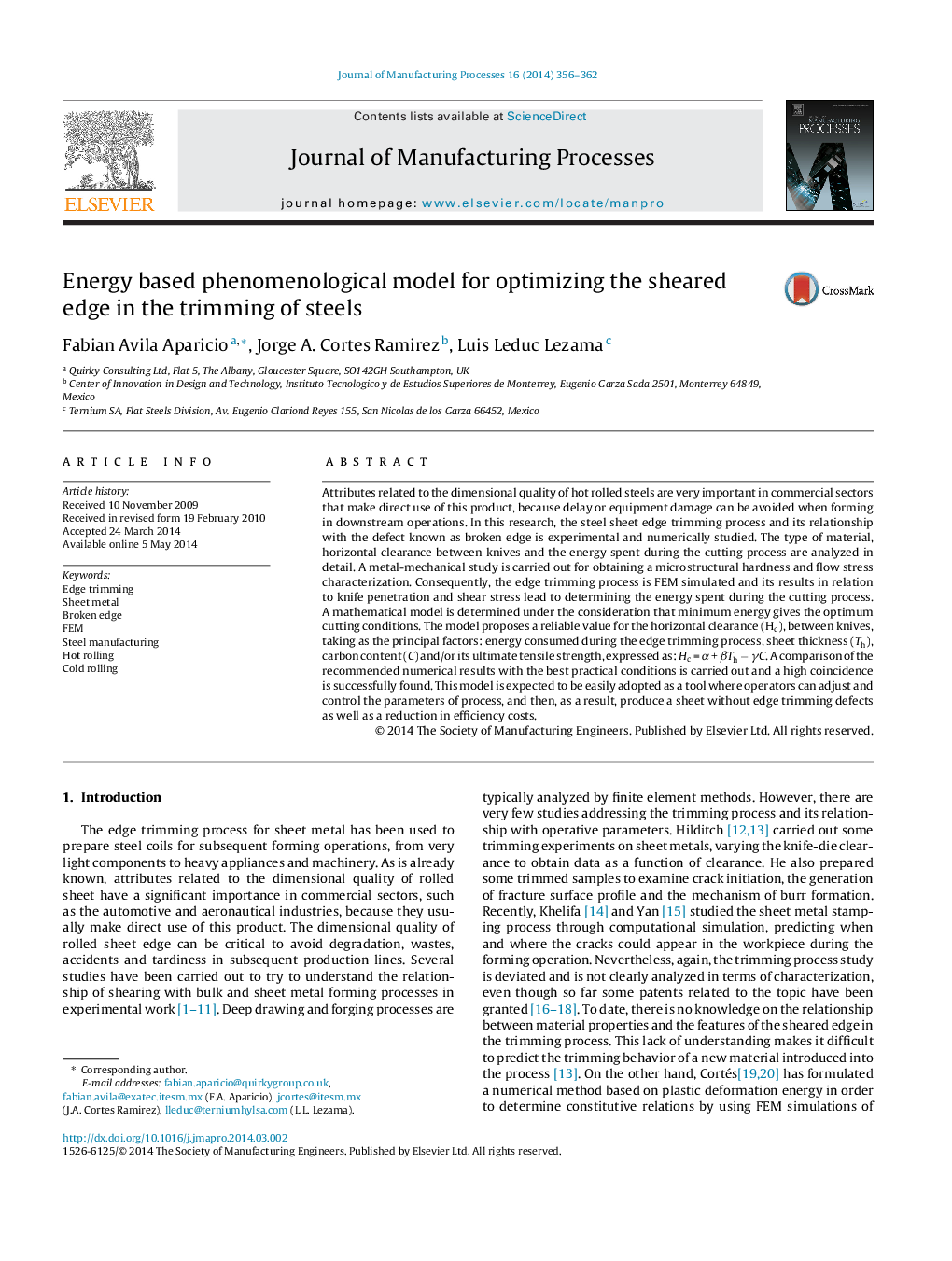| Article ID | Journal | Published Year | Pages | File Type |
|---|---|---|---|---|
| 1697070 | Journal of Manufacturing Processes | 2014 | 7 Pages |
Attributes related to the dimensional quality of hot rolled steels are very important in commercial sectors that make direct use of this product, because delay or equipment damage can be avoided when forming in downstream operations. In this research, the steel sheet edge trimming process and its relationship with the defect known as broken edge is experimental and numerically studied. The type of material, horizontal clearance between knives and the energy spent during the cutting process are analyzed in detail. A metal-mechanical study is carried out for obtaining a microstructural hardness and flow stress characterization. Consequently, the edge trimming process is FEM simulated and its results in relation to knife penetration and shear stress lead to determining the energy spent during the cutting process. A mathematical model is determined under the consideration that minimum energy gives the optimum cutting conditions. The model proposes a reliable value for the horizontal clearance (Hc), between knives, taking as the principal factors: energy consumed during the edge trimming process, sheet thickness (Th), carbon content (C) and/or its ultimate tensile strength, expressed as: Hc = α + βTh − γC. A comparison of the recommended numerical results with the best practical conditions is carried out and a high coincidence is successfully found. This model is expected to be easily adopted as a tool where operators can adjust and control the parameters of process, and then, as a result, produce a sheet without edge trimming defects as well as a reduction in efficiency costs.
